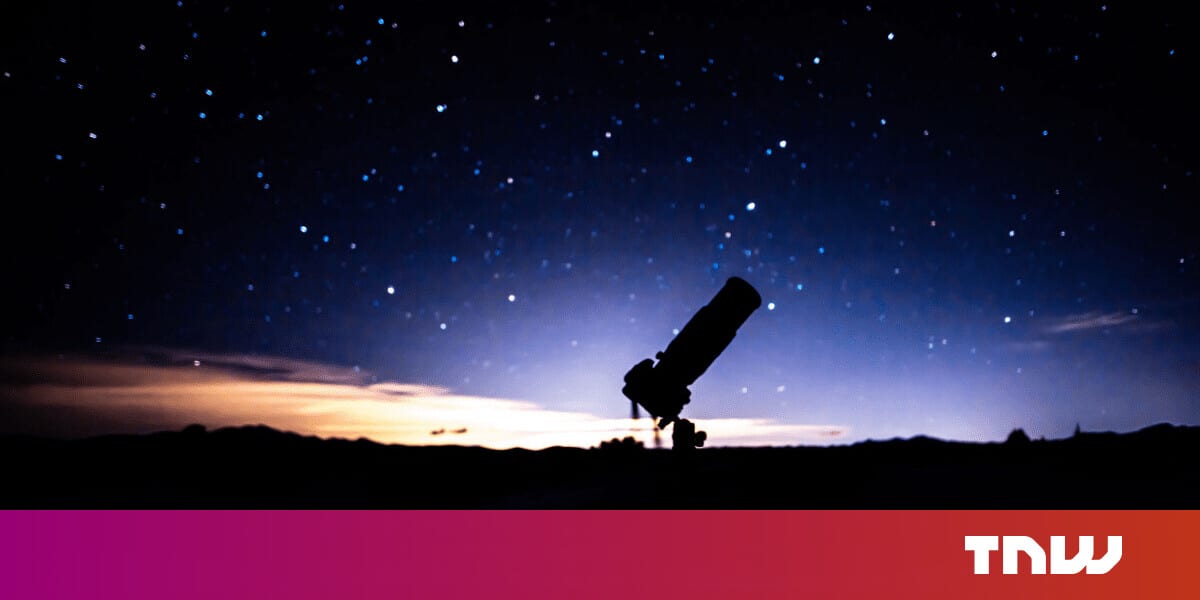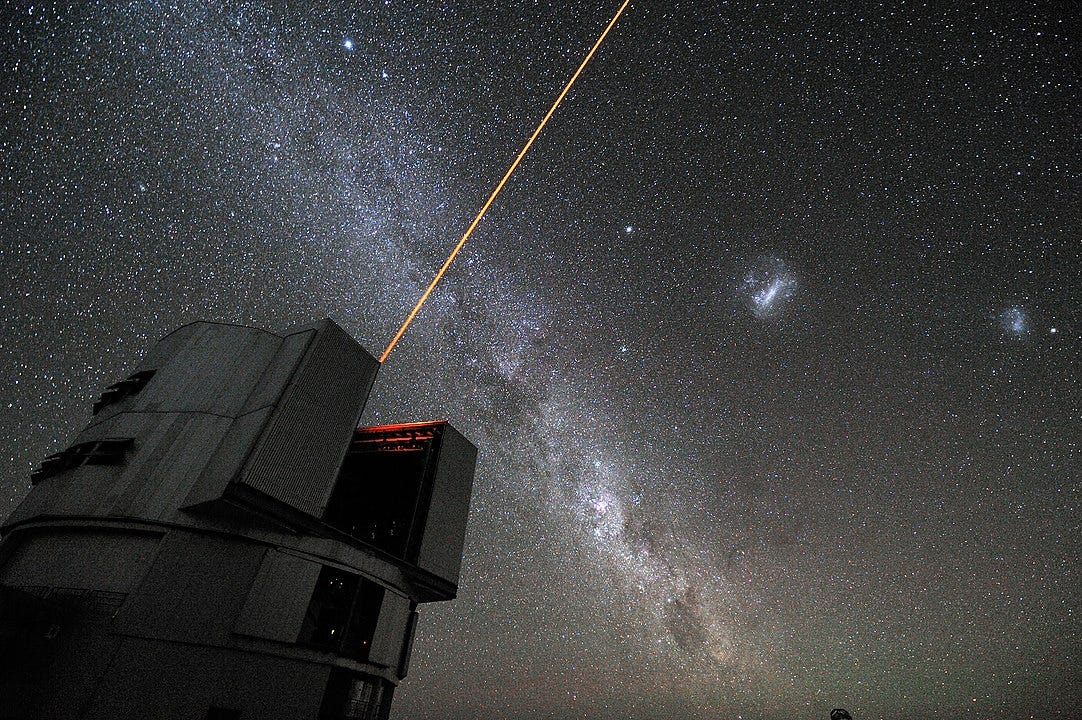This is a bit warped
Just as the Hubble Space Telescope was starting its mission at the beginning of the 1990’s, adaptive optics were developed — a technology that removes much of the image wavering caused by the atmosphere, using a small, deformable mirror. Distortions from a point of light (like a star) are measured, and the mirror is bent in the opposite direction of the distortion, correcting the image of the main target seen by the astronomer. These corrections can be made more than 1,000 times every second.
“Since suitable stars are not available everywhere in the night sky, astronomers can create artificial stars instead by shining a powerful laser beam into the Earth’s upper atmosphere. Thanks to these laser guide stars, almost the entire sky can now be observed with adaptive optics,” The European Southern Observatory (ESO) explains.
When viewing targets in visible light, astronomers using adaptive optics can produce images that rival today’s current space-based telescopes. However, to see X-rays, long radio waves, and other frequencies, we must always place telescopes above the atmosphere. Although images using adaptive optics are much more clear and detailed than ever before, the atmosphere of the Earth will always continue to block most wavelengths of electromagnetic radiation.
On the other hand, telescopes on the ground provide a few major advantages. The most obvious of these is that they are on the ground, making them easier to access. Although a large percentage of astronomical observations are carried out remotely by astronomers, some researchers still carry out their studies at the telescope, and ground-based observatories are much easier to visit.
Repairs and upgrades to telescopes are also much easier to carry out on the ground than in space. Some space-based observatories, like the upcoming James Webb Space Telescope (JWST), orbit so far from Earth, that visits to repair or update the instruments are impossible.
Another factor in the favor of keeping telescopes on the ground (when possible) is cost. For identical telescopes, it is much less expensive to build a telescope on the ground than to place it into orbit around the Earth or the Sun.
The atmosphere of Earth will always block most wavelengths of the em spectrum. When observing at those frequencies, we will forever need to place instruments above the atmosphere. However, when studying targets in visible and short-wavelength radio waves, ground-based observatories are here to stay for a long time.
This article was originally published on The Cosmic Companion by James Maynard, founder and publisher of The Cosmic Companion. He is a New England native turned desert rat in Tucson, where he lives with his lovely wife, Nicole, and Max the Cat. You can read this original piece here.
Astronomy News with The Cosmic Companion is also available as a weekly podcast, carried on all major podcast providers. Tune in every Tuesday for updates on the latest astronomy news, and interviews with astronomers and other researchers working to uncover the nature of the Universe.

